German Beverages: Basic Overview
Common Ingredients
Common Preparing Methods
Key Taste
Drinking Etiquette
Culinary Festivals
Influence and Fusion
Classifications of German Beverages
-
Alcoholic Beverages
German alcoholic beverages showcase a rich tradition with beers adhering to the Reinheitsgebot, offering purity and variety, while wines from regions like the Rhine River emphasize Germany’s viticultural expertise.
Spirits such as schnapps and korn highlight traditional distillation methods, integral to German culture and festivities.
-
Non-alcoholic Beverages
German non-alcoholic drinks range from schorle, a refreshing mix of fruit juice and sparkling water, to eiskaffee, blending coffee with ice cream.
The country also embraces herbal and fruit teas, providing comfort in colder seasons, alongside modern beverages like club-mate, reflecting Germany’s innovative approach to refreshment.
German beverages are drinks commonly enjoyed in Germany, a country located in Central Europe, known for its rich history, diverse culture, and significant contributions to art, science, and philosophy.
Germany is bordered by nine countries and has coastlines along the North and Baltic Seas, making it a central hub for cultural exchange and influences coming from refreshing drinks in Europe.
The country has a variety of alcoholic beverages, with beer being particularly famous worldwide. Germany is known for its beer purity law, the Reinheitsgebot, which dates back to 1516 and ensures the quality of beer by limiting the ingredients to water, barley, and hops.
Wine is also a significant part of German beverage culture, especially in regions like the Rhine and Mosel valleys, where vineyards produce internationally acclaimed white wines, such as Riesling.
In addition to beer and wine, Germany is known for its spirits, such as Schnapps, a type of distilled spirit that comes in many flavors.
Non-alcoholic beverages in Germany include a wide range of mineral waters, juices, and soft drinks. Coffee and tea are also popular, with unique German variations like “Eiskaffee” (iced coffee) and “Ostfriesentee” (East Frisian tea).
In addition to exploring Germany’s most renowned beverages, I delve into its age-old drinking traditions, uncovering the factors that have led to the fame of these drinks, as well as the art of pairing them with food.
Uncover the secrets of German beverages now!
36 Popular German Beverages
Explore the finest German beverages, meticulously assembled in a list of 36 choices, arranged according to their popularity. This detailed guide provides sophisticated filters to fine-tune your exploration, enabling you to sort by popularity, ingredients, flavors, and methods of preparation.
Whether your preference leans towards traditional, national, fusion or street beverages, this guide effortlessly guides you through Germany’s diverse beverage landscape.
Passed down through generations, these beverages carry the essence of German heritage. They’re often enjoyed during specific rituals or holidays.
German Beer
- Alcoholic
- Street Beverages
- Traditional
German beer, a cornerstone of German culture, is traditionally brewed using only water, hops, and malt, adhering to the strict guidelines of the Reinheitsgebot, or German Beer Purity Law.
This beverage is known for its vast array of styles, with some of the most famous variations including Pilsner, Weizenbier (wheat beer), and Bockbier, each offering distinct flavors and brewing techniques.
German beer is particularly celebrated during Oktoberfest, a festival held annually in Munich, where beer plays a central role in the festivities. This event showcases the rich beer culture of Germany, highlighting traditional brews alongside modern interpretations.
Lager
- Alcoholic
- National
- Street Beverages
- Traditional
Lager is a type of beer that is conditioned at low temperatures. It is known for its crisp and refreshing taste, with a smooth finish. Lager is a national drink in Germany and plays a significant role in the country’s beer culture, which is renowned worldwide.
There are numerous famous variations of lager in Germany, including Pilsner, which is a pale lager with a distinct hop flavor, and Dunkel, a darker lager with a malty taste.
Lager is often associated with various festivals and celebrations in Germany, most notably Oktoberfest, where it is enjoyed in large quantities.
Jägermeister
- Alcoholic
- Traditional
Jägermeister is a well-known herbal liqueur from Germany, characterized by its deep and complex flavor profile that includes 56 different herbs, fruits, roots, and spices.
This traditional drink, often served as a digestif, is deeply rooted in German culture and is recognized by its iconic green bottle and stag emblem.
Jägermeister has gained international fame and is often enjoyed in various ways, including neat, as part of cocktails, or as a chilled shot. It is a popular choice at celebrations and social gatherings, both in Germany and around the world.
German Wine
- Alcoholic
- Traditional
German wine, also known as wein, is a traditional beverage of German cuisine, primarily produced in the western regions along the Rhine River and its tributaries.
With vineyards dating back to Roman times, Germany is renowned for its white wines, particularly those made from the Riesling grape. This grape variety is celebrated for producing aromatic, fruity, and elegant wines that can range from very dry to sweet.
Germany is the world’s eighth-largest wine producer, with a significant portion of its vineyards located in the state of Rhineland-Palatinate.
The country offers a diverse array of wine styles, including dry, semi-sweet, and sweet white wines, as well as rosé, red wines, and sparkling wines known as Sekt.
German wines are known for their high acidity, a characteristic attributed to the cooler climate and grape varieties like Riesling.
Fanta
- Non-Alcoholic
- National
- Traditional
Fanta, originally developed in Germany, is a brand of fruit-flavored carbonated soft drinks. It was created by Coca-Cola Deutschland as an alternative to Coca-Cola during the American trade embargo of Nazi Germany in 1941, which made the import of Coca-Cola’s ingredients difficult.
Fanta quickly became a staple in the German beverage market, with its initial success marked by the sale of three million cases in 1943. The modern formulation of Fanta, particularly the orange flavor, was developed in Italy in 1955.
Today, Fanta boasts over 200 flavors worldwide, with some notable variations including the orange version from Italy, the strawberry version from Algeria, the grape version from Brazil, and others.
Each country can have its unique recipe, contributing to the global tapestry of Fanta’s flavors. Despite its origins during a tumultuous time, Fanta has evolved into a beloved beverage enjoyed in numerous countries around the world.
Weizenbier
- Alcoholic
- Street Beverages
- Traditional
Weizenbier, or hefeweizen in some areas, is a traditional German wheat beer from Bavaria with a history dating back to the 15th century. It’s known for its cloudy appearance and unique flavors of banana and clove, due to the use of malted wheat and specialized yeast.
Variants like the darker dunkelweizen, the stronger weizenbock, and the clear Kristallweizen offer diverse tastes. While not tied to specific festivals, weizenbier is a staple in German beer culture, especially in Bavaria, enjoyed in beer gardens and social events.
Schnapps
- Alcoholic
- National
- Traditional
Schnapps is a national liquor in German cuisine, known for its clear, distilled spirit form. It is made from fermenting fruit juices, such as apples, pears, plums, or cherries, which contributes to its wide variety of flavors.
In Germany, schnapps is often enjoyed as a digestive aid after meals. There are many famous variations of schnapps, including Obstler, which is made from apples and pears, and Zwetschgenwasser, made from plums.
Radler
- Alcoholic
- Street Beverages
- Traditional
Radler is a refreshing, low-alcohol beverage that combines beer with carbonated lemonade or citrus-flavored soda. Originating in Germany, it is a traditional drink enjoyed by cyclists and others seeking a lighter alternative to beer.
Radler, which means “cyclist” in German, is especially popular during the warmer months and is often associated with outdoor activities and beer gardens.
There are various versions of Radler, with some using different types of beer or flavored sodas, but the classic combination remains a favorite. Radler is a staple at many summer gatherings and celebrations in Germany.
Kirsch
- Alcoholic
- Traditional
Kirsch, also known as kirschwasser, is a traditional clear spirit from Germany, distilled from sour cherries. This potent beverage is renowned for its distinct cherry-pit flavor and alcoholic content, making it a unique component of German culinary traditions.
Kirsch is not only enjoyed as a drink but also plays a crucial role in various German dishes, most notably in the Black Forest gateau, where it imparts a characteristic cherry flavor to the cake.
Glühwein
- Alcoholic
- Street Beverages
- Traditional
Glühwein is a traditional German mulled wine enjoyed during winter and the Christmas season. Made by heating red wine with spices like cinnamon, cloves, star anise, and orange, it’s often sweetened with sugar and can include a shot of rum.
While primarily based on red wine, white wine versions exist but are less common. Glühwein is a festive staple at Christmas markets in German-speaking areas and is celebrated for its warm, spicy flavor that embodies the holiday spirit.
Eierlikör
- Alcoholic
- Traditional
Eierlikör, known in some regions as German egg liqueur, is similar to what is known in English-speaking countries as eggnog. It is a rich and creamy liqueur made from egg yolks, sugar, and spirits, typically brandy or rum.
Eierlikör is a traditional beverage enjoyed particularly during Easter and Christmas in Germany, but it is also popular throughout the year as a dessert drink or as an ingredient in sweets and pastries.
Variations of Eierlikör may include the addition of vanilla, cream, or other flavorings to enhance its smooth and custardy taste.
Heiße Schokolade
- Non-Alcoholic
- Street Beverages
- Traditional
Heiße schokolade, also known as hot chocolate, is a traditional warm beverage of German cuisine, enjoyed for its rich, chocolatey flavor. This comforting drink is made by blending heated milk or water with chocolate or cocoa powder, often sweetened to taste.
It’s commonly enhanced with whipped cream or marshmallows for an extra indulgent experience. Hot chocolate features numerous variations across the globe, such as the spiced chocolate para mesa in Latin America and the thick cioccolata calda in Italy.
It is a popular choice during the cold months and festive seasons for its warming properties.
Hugo Cocktail
- Alcoholic
- Fusion
Hugo cocktail is a relatively recent addition to the German beverage scene, gaining popularity in the 2000s. It is a light and refreshing alcoholic cocktail made with Prosecco, elderflower syrup, sparkling water, fresh mint leaves, and lime.
The hugo cocktail is often enjoyed as an aperitif and has become a staple at outdoor gatherings, garden parties, and summer events. Its popularity has spread beyond Germany to other parts of Europe, making it a modern, trendy choice for social occasions.
Dunkel
- Alcoholic
- Street Beverages
- Traditional
Dunkel, which means ‘dark’ in German, is a traditional style of lager that is characterized by its smooth, malty flavor profile.
This beer is brewed using roasted malt, which imparts a rich, deep color and a complex taste that includes hints of chocolate, caramel, and sometimes a slight bitterness.
Dunkel is a popular variation within the broader category of German lagers and is enjoyed for its balance and depth of flavor. Dunkel is a staple in German beer culture and can be found in beer halls and festivals throughout the country.
Schorle
- Non-Alcoholic
- Street Beverages
- Traditional
Schorle is a popular German drink made by mixing carbonated mineral water with fruit juice, most commonly apple juice, known as “Apfelschorle.”
This beverage is a staple in German cuisine and is favored for its refreshing taste and lower sugar content compared to pure fruit juices. Schorle can be found in various flavors, with grape and pear being other popular choices.
It is a versatile drink, enjoyed both as a casual, everyday refreshment and as a non-alcoholic option at social events and celebrations. The simplicity and widespread availability of Schorle make it a beloved choice across all age groups in Germany.
Apfelwein
- Alcoholic
- Traditional
Apfelwein, also known as “Ebbelwoi” in the Hessian dialect, is a popular alcoholic beverage in the Hesse region of Germany, particularly around Frankfurt. It is a type of cider made from fermented apple juice and is known for its tart and sour taste.
Apfelwein is a traditional drink that holds a special place in local culture, often consumed in cozy apple wine taverns or at outdoor festivals. There are variations in sweetness and flavor depending on the apple varieties used and the production methods.
Apfelwein is also celebrated annually at various festivals in the region, where it is enjoyed alongside traditional German fare.
Asbach Uralt
- Alcoholic
- Traditional
Asbach uralt is a renowned German brandy that has been a traditional beverage since its inception in 1892. It is known for its rich history and has been enjoyed both neat and in various cocktails.
Asbach uralt is often associated with a sense of heritage and quality within German spirit traditions. It is a preferred choice for celebrations and special occasions due to its esteemed reputation.
Korn
- Alcoholic
- Traditional
Korn, also known as Kornbrand or Kornbranntwein, is a traditional German clear spirit distilled from fermented cereal grains.
It is a staple of German drinking culture, particularly in rural areas, and is known for its purity and simplicity, as the addition of flavorings or colorings is not permitted.
Korn is typically consumed neat, especially in Northern Germany, and is often accompanied by beer in a traditional pairing known as “Herrengedeck.” Variations of Korn include Doppelkorn, which has a higher alcohol content.
It is a common presence at various local celebrations and gatherings, reflecting its role as a traditional and communal beverage in German culture.
Spezi
- Non-Alcoholic
- National
- Street Beverages
- Traditional
Spezi, a popular soft drink in Germany, is a blend of cola and orange soda. Originating from Augsburg, Germany, and owned by Brauhaus Riegele, the term “Spezi” has become a generic name for this type of drink in German-speaking countries.
Introduced in the 1950s, Spezi has become a staple in the German beverage market. There are various versions of Spezi, including sugar-free options, catering to diverse tastes. Spezi is widely enjoyed in casual and social settings across Germany.
Feuerzangenbowle
- Alcoholic
- Street Beverages
- Traditional
Feuerzangenbowle is a traditional German beverage that is especially popular during the winter holiday season, including Christmas and New Year’s Eve.
The name translates to “fire-tongs punch,” which aptly describes the preparation method involving a rum-soaked sugarloaf set ablaze, allowing the caramelized sugar to drip into a pot of mulled wine.
This festive drink is not only enjoyed for its warm, spicy flavor but also for the ceremonial aspect of its preparation, which adds an element of spectacle to gatherings.
Eiskaffee
- Non-Alcoholic
- Fusion
- Street Beverages
Eiskaffee, known in English as “iced coffee,” is a popular German beverage that combines coffee with ice cream, typically vanilla. It is often topped with whipped cream and sometimes garnished with chocolate shavings or cocoa powder.
Eiskaffee is enjoyed as a refreshing treat during the warmer months and can be found in cafes and ice cream parlors across Germany.
It is a fusion drink that combines the traditional European love for coffee with the universal appeal of ice cream, making it a favorite among people of all ages.
Ostfriesentee
- Non-Alcoholic
- Traditional
Ostfriesentee, also known as East Frisian tea, is a traditional black tea blend popular in East Frisia, Germany. This beverage is a significant part of East Frisian culture and is known for its strong, malty flavor, often enjoyed with a special ritual that includes cream and rock sugar.
Ostfriesentee is not only a daily drink but also plays a central role in social gatherings and is an essential part of the region’s hospitality tradition.
Himbeergeist
- Alcoholic
- Traditional
Himbeergeist is a traditional German spirit made by distilling fermented raspberries, often enjoyed as a digestif. It falls under the category of eau de vie, a term that refers to clear, fruit-based brandies.
Himbeergeist is particularly notable for its intense raspberry aroma and flavor, achieved through the distillation process. It is a cherished part of German culinary tradition, often savored after meals to aid digestion.
Colaweizen
- Alcoholic
- Fusion
Colaweizen, a unique blend of cola and wheat beer, is a popular and unconventional beverage in German cuisine. This fusion drink combines the refreshing qualities of cola with the traditional flavors of German wheat beer, creating a distinctive taste experience.
Colaweizen has carved out its own niche, especially among younger generations looking for novel drinking experiences.
Altbier
- Alcoholic
- Traditional
Altbier, also known as “old beer,” is a traditional German beer style, particularly associated with the Rhineland and the city of Düsseldorf.
This copper-colored beer is distinguished by its top-fermentation process, an older brewing method compared to the bottom fermentation used for lagers. Altbier combines the fruity flavors characteristic of ale yeast with the crispness of lagering, resulting in a unique taste profile.
The Schumacher brewery, established in 1838 in Düsseldorf, was the first to use the name Altbier. This beer style is often celebrated in a stronger variant known as “sticke alt,” which is typically brewed for special occasions or as a seasonal offering.
Fassbrause
- Non-Alcoholic
- Street Beverages
- Traditional
Fassbrause, also known as “keg soda,” is a traditional German beverage that can be either non-alcoholic or alcoholic, depending on the brand. Originating from Berlin, it is made from fruit and malt extract and often includes spices.
Fassbrause is characterized by its beer-like color and typically has an apple flavor, although it is less sweet and not as spicy as similar drinks like the Austrian Almdudler.
There are variations of Fassbrause, such as the “Rote Fassbrause” with a raspberry flavor, which emerged in the 1950s in the German Democratic Republic. The drink was invented in 1908 by chemist Ludwig Scholvien as a non-alcoholic alternative to beer.
Today, Fassbrause is available in various forms, with some brands mixing it with beer to create a drink known as “Gespritztes” in Berlin and Brandenburg. It is served on tap throughout Berlin and is associated with several popular brands like Rixdorfer and Berliner Fassbrause.
Fritz-kola
- Non-Alcoholic
- Street Beverages
Fritz-kola is a modern soft drink originating from Hamburg, Germany, known for its high caffeine content.
It was introduced in 2003 by two students, Lorenz Hampl and Mirco Wiegert, who sought to create a cola with less sugar and more caffeine than traditional colas like Coke or Pepsi.
Fritz-kola is distinctive for its use of lemon flavor and its original black and white labels featuring the founders’ faces. The brand has expanded significantly since its inception, now employing 280 people and distributing across several European countries.
Kraut Juice
- Non-Alcoholic
- Traditional
Kraut juice, derived from the traditional German dish sauerkraut, is a beverage made from the liquid produced during the fermentation of cabbage. This traditional German drink is known for its sour taste and health benefits, attributed to the fermentation process.
While not as widely recognized as sauerkraut itself, kraut juice embodies the traditional aspects of German cuisine, focusing on preservation and fermentation techniques passed down through generations.
Selters
- Non-Alcoholic
- Street Beverages
- Traditional
Selters, also known for its natural springs, is a traditional German beverage that comes from the village of Selters in the Hesse region. This carbonated mineral water is renowned for its unique taste and mineral content, making it a popular choice both in Germany and internationally.
The name “Selters” has become synonymous with carbonated mineral waters, often referred to as “seltzer” in various parts of the world.
Blutwurz
- Alcoholic
- Traditional
Blutwurz is a Bavarian herbal liqueur made from the tormentil plant’s root, giving it a distinctive red color and its name, meaning “blood root” in German.
Traditionally used for its medicinal properties, the root is now primarily used by the Penninger company to produce Blutwurz liqueur. The liqueur is crafted through a weeks-long maceration process, avoiding distillation to retain the root’s flavors and oils.
With an alcohol content of 38% to 60%, blutwurz is enjoyed as an apéritif, digestif, or in cocktails, and is valued for its unique taste in Bavarian culture.
Mexikaner
- Alcoholic
- Fusion
Mexikaner is a spicy German shot made from clear liquor (typically korn, but sometimes vodka or tequila), tomato juice, sangrita, Tabasco sauce, salt, and black pepper. It’s similar to a Bloody Mary but serves as a shot and is more heavily spiced.
Originating in Hamburg in 1987 by barkeeper Mike Coloni, it was initially created to mask the taste of a cheap spirit. The drink quickly gained popularity for its unique flavor and is now a staple in many German bars, especially in Hamburg.
Despite its name, Mexikaner is unknown in Mexico and is a product of German creativity. It’s known for its low alcohol content, around 6-9%, and is often enjoyed for its blend of spicy and savory flavors.
Rüdesheimer Kaffee
- Alcoholic
- Street Beverages
- Traditional
Rüdesheimer kaffee is a traditional alcoholic coffee drink originating from Rüdesheim am Rhein in Germany. Invented in 1957 by Hans Karl Adam, a German television chef, this beverage is a celebrated part of German coffee house culture.
It uniquely combines 125 ml of hot, black coffee with 3 sugar cubes and 4 cl of Asbach Uralt brandy, a well-known German brandy. The brandy is flambéed with the sugar in a special Rüdesheimer cup to dissolve the sugar, after which the coffee is added.
The drink is then topped with vanilla sugar-sweetened whipped cream and garnished with dark chocolate shavings.
Pharisäer Kaffee
- Alcoholic
- Street Beverages
- Traditional
Pharisäer kaffee, also known as pharisäer, is a traditional German coffee drink that combines the warmth of coffee with the richness of rum and the smoothness of whipped cream.
This beverage is typically made by blending hot coffee with a generous shot of dark rum and topping it with a thick layer of whipped cream.
The cream is not stirred into the coffee and rum mixture but rather left to float on top, allowing the drinker to sip the warm, alcoholic coffee through the cool cream.
Originating from northern Germany, pharisäer kaffee is often associated with social gatherings and special occasions, making it a cherished part of the region’s culinary heritage.
Club-Mate
- Non-Alcoholic
- Street Beverages
Club-Mate, originating from Germany in 1924, is a caffeinated carbonated beverage made from mate-extract. Known for its unique taste and lower sugar content compared to other soft drinks, it has become a staple in German beverage culture.
Club-Mate is recognized for its versatility, often used in mixed drinks like vodka-mate and Tschunk. Over the years, it has seen various seasonal and flavor variations, such as the winter edition with spices and Club-Mate Granat with pomegranate flavor, catering to diverse palates.
Killepitsch
- Alcoholic
- Traditional
Killepitsch is a traditional herbal liqueur originating from Düsseldorf, Germany. It is recognized for its deep red color and complex flavor profile, which includes a blend of fruits, berries, herbs, and spices.
This beverage, with an alcohol content of 42%, is a product of the Busch family’s craftsmanship, dating back to 1858.
While Killepitsch is a unique drink on its own, it shares the broader category of Kräuterlikör with other herbal liqueurs, which are known for their digestive properties and are often enjoyed neat or in cocktails.
Sechsämtertropfen
- Alcoholic
- Traditional
Sechsämtertropfen, a traditional German liqueur, boasts a rich history dating back to its creation by pharmacist Gottlieb Vetter in 1895.
This beverage, with an alcohol content of 33%, is distinguished by its herbal, berry, and root extracts, with the rowan berry playing a pivotal role in its flavor profile.
Originating from the Bavarian Fichtel Mountains, Sechsämtertropfen is named after the six administrative districts around Wunsiedel, known as Sechsämterland.
Its packaging proudly features the coats of arms of these districts, celebrating its regional heritage. Available in various flavors like wild berry, hazelnut, and plum, Sechsämtertropfen offers a taste of German tradition with every sip.
Which German Dishes to Pair with Beverages?
Pairing German dishes with the right beverages enhances the dining experience by complementing the flavors and textures of the food. Here’s a guide to some classic pairings:
Remember, the best pairing between beverage and outstanding dishes from German is one that suits your personal taste, so feel free to experiment with different combinations to find what you enjoy the most!
Discover the world of German beverages and share your experiences below. Whether you’re a connoisseur or new to these delights, there’s a German drink waiting for you. Share this guide with friends and embark on a flavorful journey together!



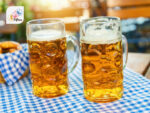
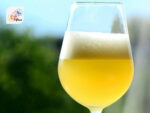
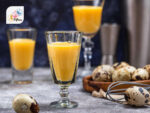

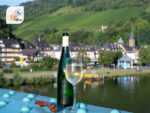
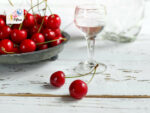
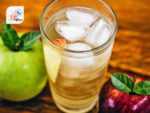
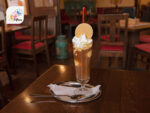
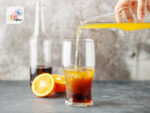
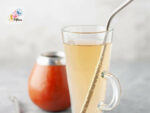
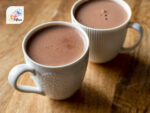
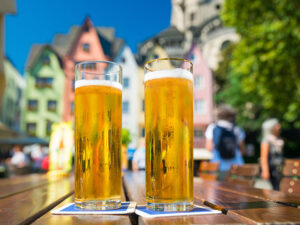
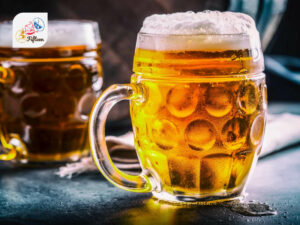
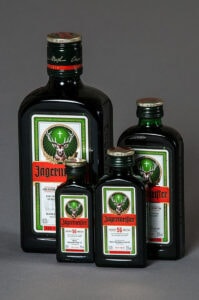
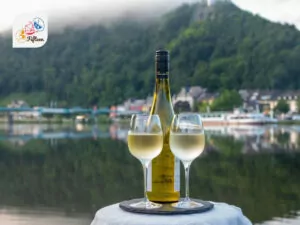
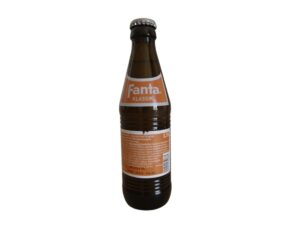
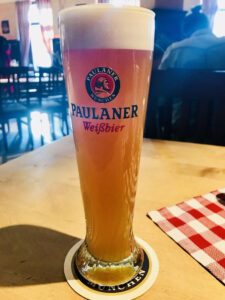
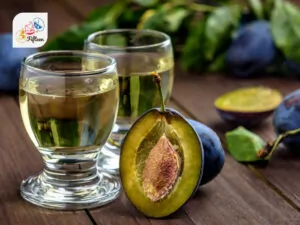
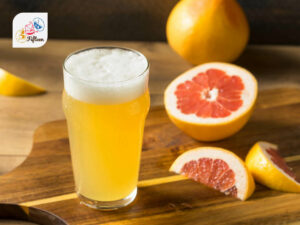
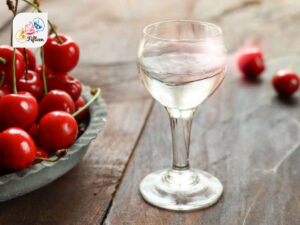
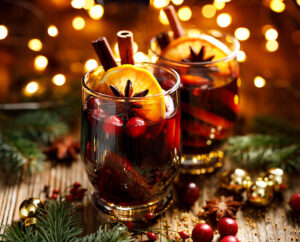
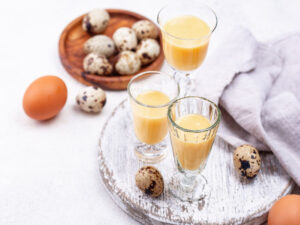
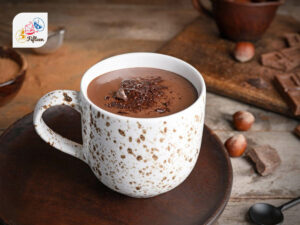
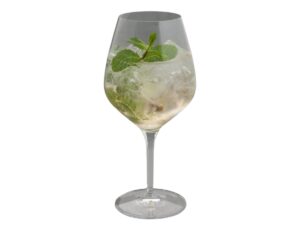
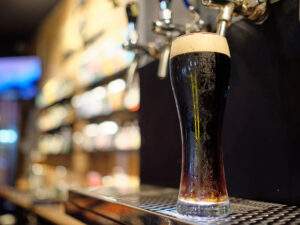
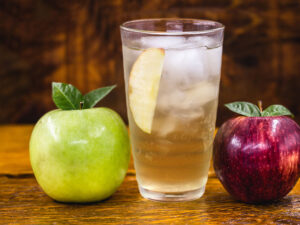
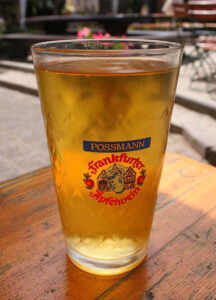
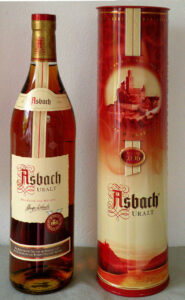
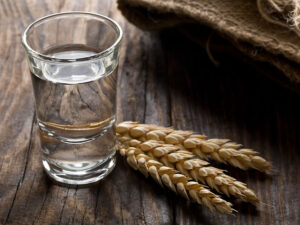
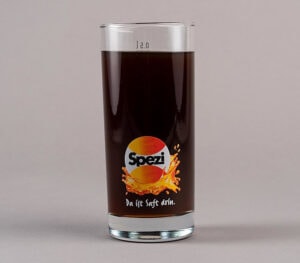
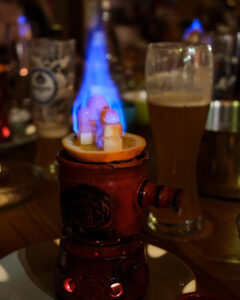
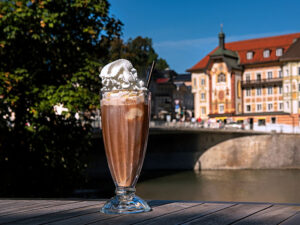
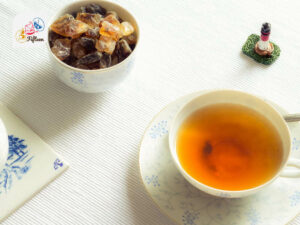
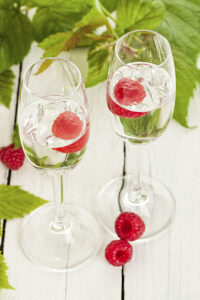
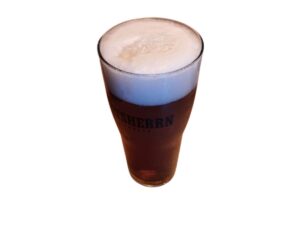
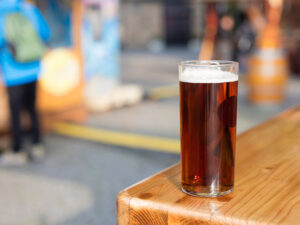
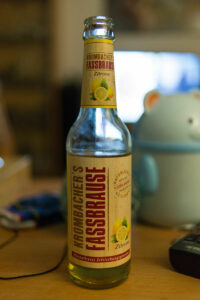
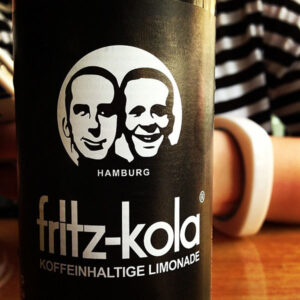
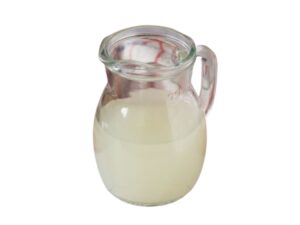
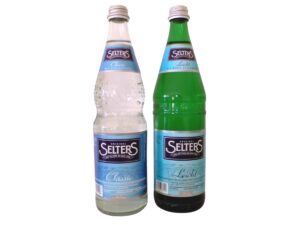
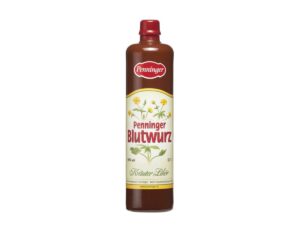
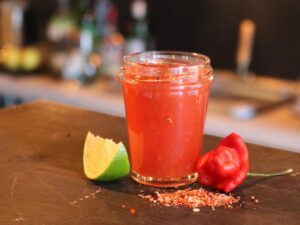
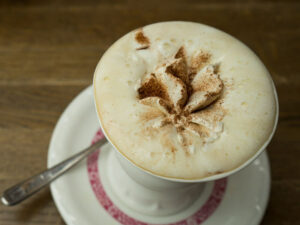
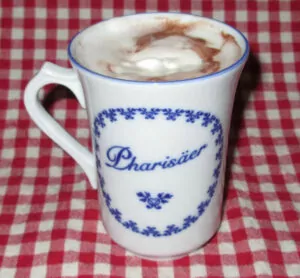
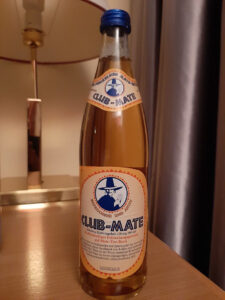
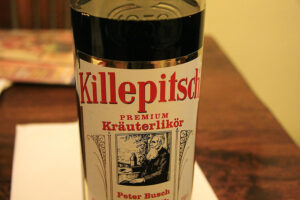
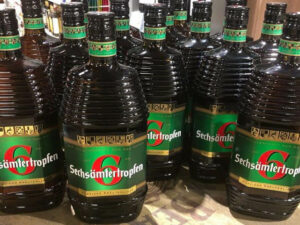
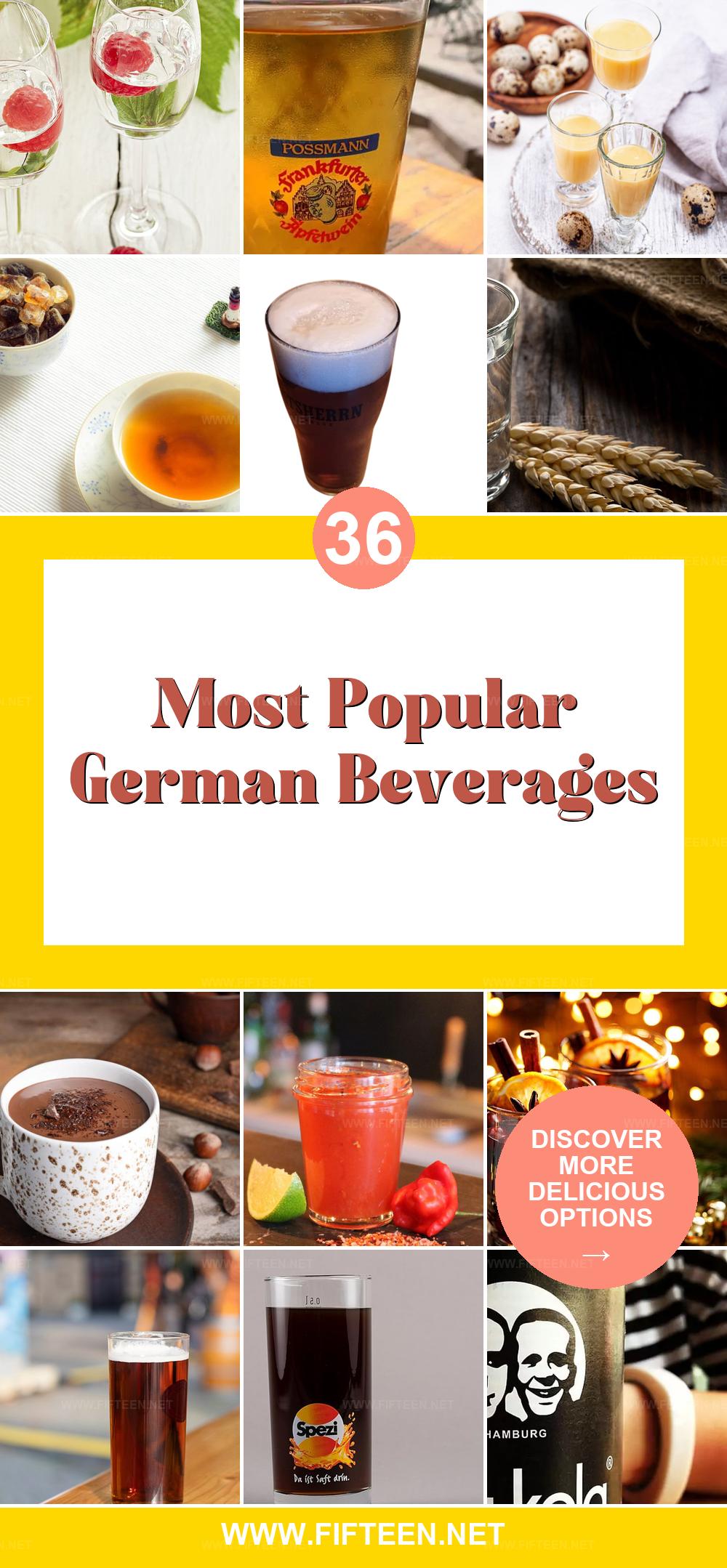
Jamie Scott
Editor in Chief, Senior Content Writer
Expertise
Home Cooking, Meal Planning, Recipe Development, Baking and Pastry, Food Editor, Cooking-video Maker, Western Food Evaluation Expert
Education
Le Cordon Bleu College of Culinary Arts
Local Community College, New York, NY
Jamie Scott is a skilled culinary expert and content creator specializing in Western cuisine. With over 15 years in the culinary field and formal training from Le Cordon Bleu, Paris, Jamie deeply understands how to blend nutrition with delicious flavors. His passion for cooking matches his commitment to making healthy eating accessible and enjoyable.
On Fifteen.net, Jamie brings a fresh perspective to classic dishes and beverages, offering readers insightful recipes, cooking tips, and a fresh view on meal planning that emphasizes taste, health, and simplicity.